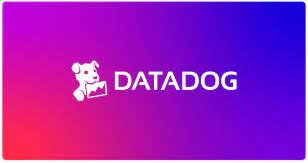How To Clone Datadog Dashboard

The Advantages of Cloning Your Datadog Dashboard
If you’re looking to improve your cloud-based infrastructure monitoring, Datadog is a great tool to use. However, setting up your dashboard can be time-consuming and repetitive if you need to create the same views for multiple environments or applications. In this article, we’ll explore the benefits of cloning your Datadog dashboard and how you can do it.
What is Datadog?
Datadog is a cloud-based infrastructure monitoring tool that provides comprehensive coverage of your cloud-based resources and applications. It integrates with over 400 technologies and supports cross-platform monitoring, giving you the ability to monitor both your cloud-based and on-premise systems.
What is dashboard cloning?
Dashboard cloning is a process of duplicating your existing Datadog dashboard. It allows you to create a new dashboard with the same settings and widgets but for a different environment or application. This eliminates the need to manually set up each dashboard, which can be time-consuming and increase the likelihood of errors.
Why clone your dashboard?
There are several advantages to cloning your Datadog dashboard:
Saves time and increases productivity
Instead of creating each dashboard from scratch, you can simply clone an existing one and make modifications as needed. This saves you time and allows you to be more productive.
Reduces errors
Creating a dashboard from scratch can be prone to errors, which can have a significant impact on your monitoring and alerting capabilities. By cloning a dashboard, you eliminate the risk of creating errors or missing important settings.
Facilitates monitoring multiple environments or applications
Cloning a dashboard allows you to create multiple dashboards with the same settings for different environments or applications. This makes it easier to monitor your entire infrastructure without having to manually configure each dashboard.
How to clone your dashboard
Cloning a dashboard in Datadog is a simple process. Here’s how to do it:
1. Log in to your Datadog account 2. Navigate to the dashboard you want to clone 3. Click the "Clone" button in the top right corner of the screen 4. Enter a name for your new dashboard and select the destination where you want to save it 5. Click "Create Dashboard" 6. You can now modify your new dashboard as needed
Conclusion
Cloning your Datadog dashboard can save you time and increase productivity, reduce errors, and facilitate monitoring multiple environments or applications. By following the simple steps outlined above, you can easily clone your dashboard and enjoy the benefits of streamlined monitoring.
FAQs
1. Can I clone a dashboard across different Datadog accounts? Unfortunately, no. You can only clone dashboards within the same account.
2. Will cloning a dashboard affect the original dashboard? No. Cloning a dashboard creates a new dashboard with the same settings as the original.
3. Can I clone a dashboard for a different team or application within the same account? Yes, you can clone a dashboard to a different team or application within the same account.
4. Will my cloned dashboard be identical to the original dashboard? Yes, the cloned dashboard will have the same settings and widgets as the original dashboard.
5. Can I clone a dashboard that was created by someone else in my team? Yes, as long as you have access to the dashboard, you can clone it.